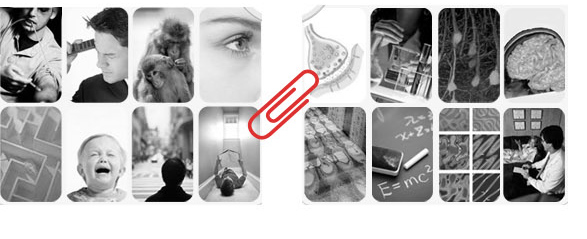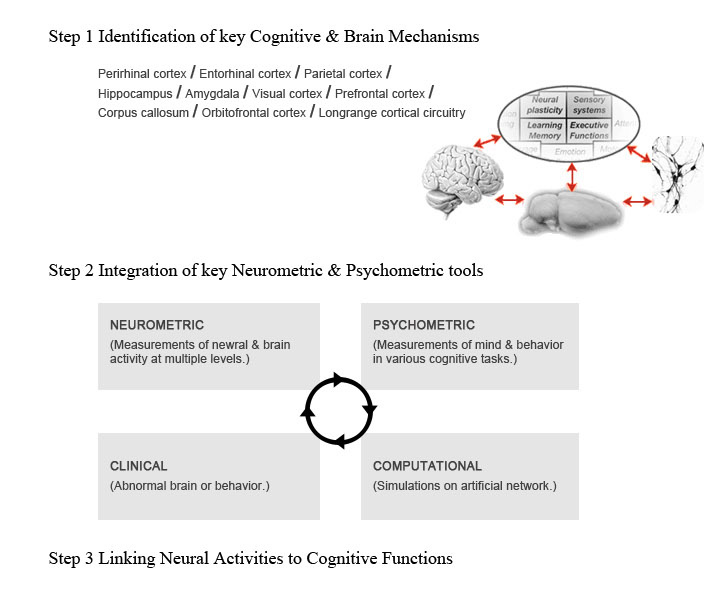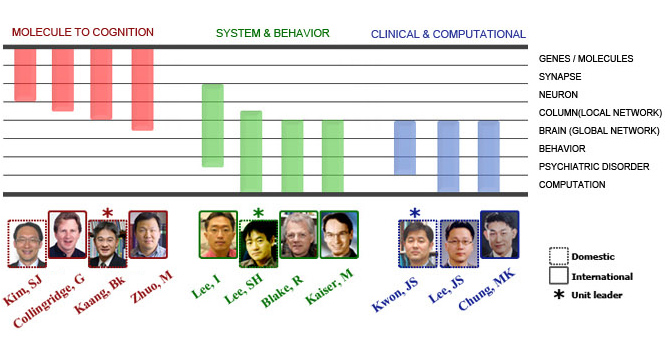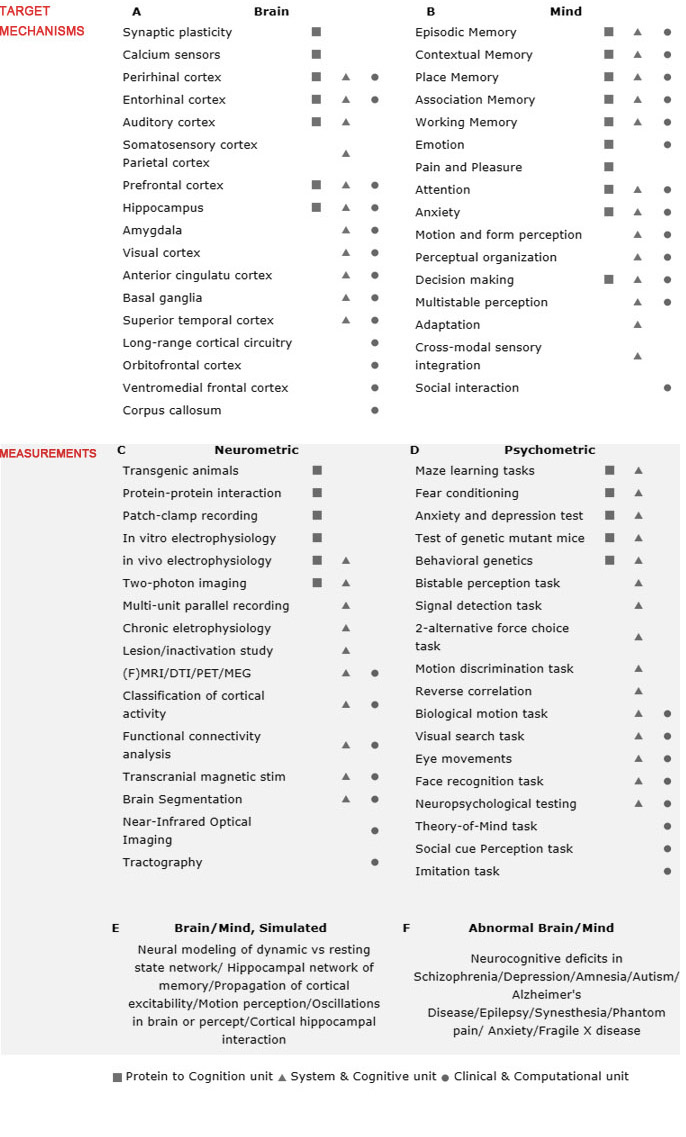Views
| (7 intermediate revisions not shown) | |||
| Line 4: | Line 4: | ||
<tr><td colspan="3"><img alt="" src="/mediawiki/uploads/8/8d/Img_blank1.jpg" width="38" height="38"></td></tr> | <tr><td colspan="3"><img alt="" src="/mediawiki/uploads/8/8d/Img_blank1.jpg" width="38" height="38"></td></tr> | ||
<tr><td width="131"></td> | <tr><td width="131"></td> | ||
| - | <td width=769"> | + | <td width="769"> |
| Line 13: | Line 13: | ||
<tr><td><span style="text-transform:uppercase;color:#000000;font-size:17px;font-family:arial;font-weight:bold">The strategy of linking brain and mind (SJRM)</span></td></tr> | <tr><td><span style="text-transform:uppercase;color:#000000;font-size:17px;font-family:arial;font-weight:bold">The strategy of linking brain and mind (SJRM)</span></td></tr> | ||
<tr><td height=20> </td><td rowspan=20 width=35><img src="/mediawiki/uploads/5/5a/Blank2.gif"></td></tr> | <tr><td height=20> </td><td rowspan=20 width=35><img src="/mediawiki/uploads/5/5a/Blank2.gif"></td></tr> | ||
| - | <tr><td span style="font-family:arial;font-size:12px;color:#414141;line-height:16px"><b>First,</b> we have identified a set of comprehensive but focused set of cognitive functions and targeted brain mechanisms with an aim to achieve breadth while insuring that our studies fall squarely within the areas of expertise of our associated faculty. | + | <tr><td span style="font-family:arial;font-size:12px;color:#414141;line-height:16px;text-align:justify"><b>First,</b> we have identified a set of comprehensive but focused set of cognitive functions and targeted brain mechanisms with an aim to achieve breadth while insuring that our studies fall squarely within the areas of expertise of our associated faculty. |
<p><br /></p><b>Second,</b> to address the 'linking' questions around those key cognitive and brain mechanisms, we intend to integrate cutting-edge 'neurometric' techniques to probe neural activities/structures at multiple levels spanning the depth of genetic, molecular, synaptic, neuronal/global network-level measurements. These brain measurements will be paralleled by state-of-the-art 'psychometric' tools to capture in mind in action, with behavioral tasks spanning the breadth of behavioral genetics, rodent memory tasks, visual perception tasks, eye movements, reverse correlation and social perception tasks. Third, based on the neurometric and psychometric data, we will build tight linkages between brain activity/structure and mind. In doing so, computational approaches will help us to build comprehensive neural models constrained by data from empirical studies. Computational models of complex brain systems allow us to put to test, via simulation, predictions that cannot be tested in empirical situations and to guide empirical studies by generating testable predictions about behaviors in the domains of both brain and mind. | <p><br /></p><b>Second,</b> to address the 'linking' questions around those key cognitive and brain mechanisms, we intend to integrate cutting-edge 'neurometric' techniques to probe neural activities/structures at multiple levels spanning the depth of genetic, molecular, synaptic, neuronal/global network-level measurements. These brain measurements will be paralleled by state-of-the-art 'psychometric' tools to capture in mind in action, with behavioral tasks spanning the breadth of behavioral genetics, rodent memory tasks, visual perception tasks, eye movements, reverse correlation and social perception tasks. Third, based on the neurometric and psychometric data, we will build tight linkages between brain activity/structure and mind. In doing so, computational approaches will help us to build comprehensive neural models constrained by data from empirical studies. Computational models of complex brain systems allow us to put to test, via simulation, predictions that cannot be tested in empirical situations and to guide empirical studies by generating testable predictions about behaviors in the domains of both brain and mind. | ||
| Line 38: | Line 38: | ||
<tr><td><span style="text-transform:uppercase;color:#000000;font-size:17px;font-family:arial;font-weight:bold">introduction and overview of research plans</span></td></tr> | <tr><td><span style="text-transform:uppercase;color:#000000;font-size:17px;font-family:arial;font-weight:bold">introduction and overview of research plans</span></td></tr> | ||
<tr><td height=20> </td></tr> | <tr><td height=20> </td></tr> | ||
| - | <tr><td span style="font-family:arial;font-size:12px;color:#414141;line-height:16px">Our research aim is to use biological, behavioral and computational methods to understand how the mind, brain and behavior are interrelated. Studying humans and animals, our research will link key cognitive and emotional functions to neural activities at multiple levels of brain systems. To establish these linkages, we set forth a research strategy, named 'SLBM (Strategy of Linking Brain and Mind)', the major steps and components of which are summarized in the following three sections.</td></tr> | + | <tr><td span style="font-family:arial;font-size:12px;color:#414141;line-height:16px;text-align:justify">Our research aim is to use biological, behavioral and computational methods to understand how the mind, brain and behavior are interrelated. Studying humans and animals, our research will link key cognitive and emotional functions to neural activities at multiple levels of brain systems. To establish these linkages, we set forth a research strategy, named 'SLBM (Strategy of Linking Brain and Mind)', the major steps and components of which are summarized in the following three sections.</td></tr> |
<tr><td height=10> </td></tr> | <tr><td height=10> </td></tr> | ||
| Line 49: | Line 49: | ||
<tr><td colspan=2><span style="text-transform:uppercase;color:#000000;font-size:17px;font-family:arial;font-weight:bold">publications (wcu)</span></td></tr> | <tr><td colspan=2><span style="text-transform:uppercase;color:#000000;font-size:17px;font-family:arial;font-weight:bold">publications (wcu)</span></td></tr> | ||
<tr><td colspan=2 height="15"> </td></tr> | <tr><td colspan=2 height="15"> </td></tr> | ||
| - | <tr><td width="54" rowspan="92"> </td> | + | <tr><!--td width="54" rowspan="92"> </td--> |
<td><span style="color:#000000;font-size:17px;font-family:Times New Roman;">Long-lasting potentiation ofsynaptic transmission in the dentate area of the anaesthetized rabbit following stimulation of hte perforant path.</span></td></tr> | <td><span style="color:#000000;font-size:17px;font-family:Times New Roman;">Long-lasting potentiation ofsynaptic transmission in the dentate area of the anaesthetized rabbit following stimulation of hte perforant path.</span></td></tr> | ||
<tr><td height=10></td></tr> | <tr><td height=10></td></tr> | ||
| - | <tr><td span style="font-family:arial;font-size:12px;color:#414141;line-height:16px">The after-effects of repetitives stimulation of the perforant path fibres to the dentate area of the hippocampal formation have been examined with extracellular micro-electrodes in rabbits anaesthetized with urethane. | + | <tr><td span style="font-family:arial;font-size:12px;color:#414141;line-height:16px;text-align:justify">The after-effects of repetitives stimulation of the perforant path fibres to the dentate area of the hippocampal formation have been examined with extracellular micro-electrodes in rabbits anaesthetized with urethane. |
<br />In fifteen out of eighteen rabbits the population response recorded from granule cells in the dentate area to single perforant path volleys was potentiated for periods ranging from 30 min to 10 hr after one or more conditioning trains at 10-20/sec for 10-15 sec, or 100/sec for 3-4 sec. | <br />In fifteen out of eighteen rabbits the population response recorded from granule cells in the dentate area to single perforant path volleys was potentiated for periods ranging from 30 min to 10 hr after one or more conditioning trains at 10-20/sec for 10-15 sec, or 100/sec for 3-4 sec. | ||
<br /> | <br /> | ||
| Line 67: | Line 67: | ||
<tr><td><span style="color:#000000;font-size:17px;font-family:Times New Roman;">An Animal Model of a Behavioral Intervention for Depression.</span></td></tr> | <tr><td><span style="color:#000000;font-size:17px;font-family:Times New Roman;">An Animal Model of a Behavioral Intervention for Depression.</span></td></tr> | ||
<tr><td height=10></td></tr> | <tr><td height=10></td></tr> | ||
| - | <tr><td span style="font-family:arial;font-size:12px;color:#414141;line-height:16px">Although conditioned inhibition of fear (or learned safety) is a learning process critical for preventing chronic stress, a predisposing factor for depression and other psychopathologies, little is known about its functional purposes or molecular mechanisms.<br /> | + | <tr><td span style="font-family:arial;font-size:12px;color:#414141;line-height:16px;text-align:justify">Although conditioned inhibition of fear (or learned safety) is a learning process critical for preventing chronic stress, a predisposing factor for depression and other psychopathologies, little is known about its functional purposes or molecular mechanisms.<br /> |
To obtain better insight into learned safety, we investigated its behavioral and molecular characteristics and found that it acts as a behavioral antidepression in two animal models. Learned safety promotes the survival of newborn cells in the dentate gyrus of the hippocampus, while its antidepressant effect is abolished in mice with ablated hippocampal neurogenesis. Learned | To obtain better insight into learned safety, we investigated its behavioral and molecular characteristics and found that it acts as a behavioral antidepression in two animal models. Learned safety promotes the survival of newborn cells in the dentate gyrus of the hippocampus, while its antidepressant effect is abolished in mice with ablated hippocampal neurogenesis. Learned | ||
| Line 77: | Line 77: | ||
<tr><td><span style="color:#000000;font-size:17px;font-family:Times New Roman;">Distinct Neural Bases of Route Following and Wayfinding in Humans An Animal Model of a Behavioral Intervention for Depression.</span></td></tr> | <tr><td><span style="color:#000000;font-size:17px;font-family:Times New Roman;">Distinct Neural Bases of Route Following and Wayfinding in Humans An Animal Model of a Behavioral Intervention for Depression.</span></td></tr> | ||
<tr><td height=10></td></tr> | <tr><td height=10></td></tr> | ||
| - | <tr><td span style="font-family:arial;font-size:12px;color:#414141;line-height:16px">Finding one's way in a lafge-scale environment may engage different cognitive processes than following a familiar route. The neural bases of these processes were investigated using functional MRI (fMRI). Subjects found their way in one virtual-reality town and followed a well-learned route in another. In a control condition, subjects followed a visible trail. Within subjects, accurate way finding activated the right posterior hippocampus. Between -subjects correlations with performance showed that good navigators (i.e, accurate wayfinders) activated the anterior hippocampus during wayfinding and head of caudate during route following. These results coincide with neurophysiological evidence for distinct response (caudate) and place (hippocampal) representations supporting navigation. We argue that the type of representation used influences both performance and concomitant fMRI activation patterns. | + | <tr><td span style="font-family:arial;font-size:12px;color:#414141;line-height:16px;text-align:justify">Finding one's way in a lafge-scale environment may engage different cognitive processes than following a familiar route. The neural bases of these processes were investigated using functional MRI (fMRI). Subjects found their way in one virtual-reality town and followed a well-learned route in another. In a control condition, subjects followed a visible trail. Within subjects, accurate way finding activated the right posterior hippocampus. Between -subjects correlations with performance showed that good navigators (i.e, accurate wayfinders) activated the anterior hippocampus during wayfinding and head of caudate during route following. These results coincide with neurophysiological evidence for distinct response (caudate) and place (hippocampal) representations supporting navigation. We argue that the type of representation used influences both performance and concomitant fMRI activation patterns. |
</td></tr> | </td></tr> | ||
| + | <tr><td height=10> </td></tr> | ||
</table> | </table> | ||
Current revision as of 10:32, 8 March 2012
|
|||||||||||||||||||||||||||||||||||||||||||















